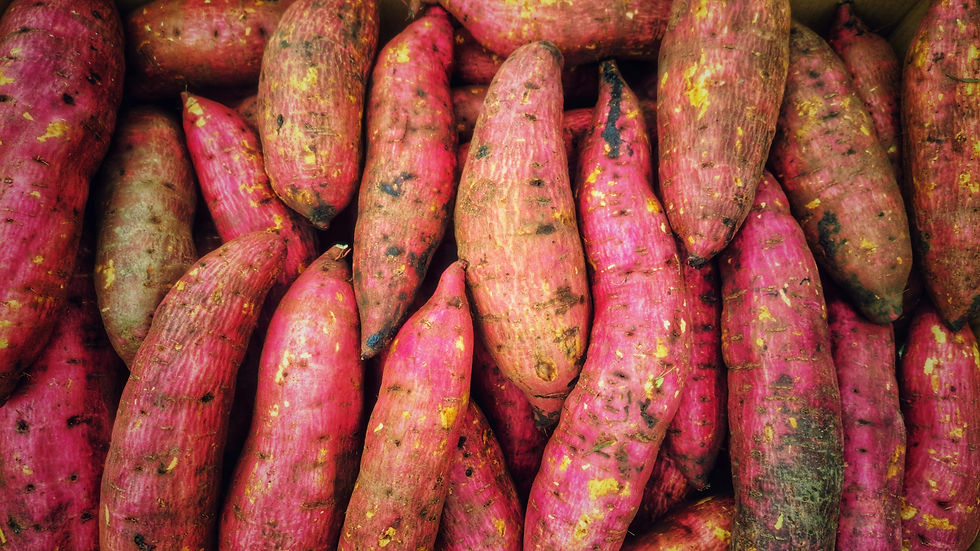Christmas Cookies!!! part two
- Chef Kelly Unger
- Dec 21, 2023
- 4 min read
In my family, it’s not Christmas until we make our heritage Slovak Kiffles. Many European countries like Poland, Hungary, Austria, Slovenia, the Czech Republic and others in the neighborhood have their versions of the Kiffle. The dough is often different, the shape is sometimes different, sometimes even the name is pronounced differently, and we Slovak's roll our dough out in powdered sugar which gives the baked Kiffle a lovely crispness as well as sweetness. Thank you to everyone who came to my Kiffles class this month. It was so fun to share my heritage and family recipe with you.
Now, for the cooks on your gift list, here are some of my favorite cookbooks that are perfect for gifting:
Dorie's Cookies by Dorie Greenspan
Martha Stewart’s Cookies and Cookie Perfection
Savory Baking Erin Jeanne McDowell
My Paris Kitchen by David Lebovitz for the baker and the Francophile
More cookbooks for the Francophile:
Let’s Eat France and Let’s Eat Paris by Francois-Regy Gaudry
Culinaria France
The French Farmhouse Cookbook by Susan Hermann Loomis
The Spirit of Alsace by Gabrielle Kreuther
Around my French Table by Dorie Greenspan
Sugar is a basic building block of our holiday baking recipes and I thought it would be helpful to explain the science behind white vs brown sugar in baking. I found a great article online from Serious Eats.com that helped me refresh my memory. I learned all about this during our baking semester in Culinary School but it’s been a few years since then and I needed to be reminded.
So let me share some excerpts from the article:
"aside from its obvious sweetness, what else does sugar do in a cookie? For starters, it's the basic building block of any dough, establishing the overall pH. How it combines with other ingredients determines the cookie's volume and density. Sugar also attracts water from the dough, interfering with gluten formation, protein coagulation, and gelatinization of starch—even bacterial development! We toss out spotty bread all the time, but when was the last time you saw a bag of moldy cookies?"
"White granulated sugar is 99% pure sucrose. But that's not the only sugar you're likely to find in a cookie dough. Brown sugar—in particular, light brown sugar—is frequently found on cookie ingredient lists. So, how does each one impact the final cookie? "
"Let’s Meet the Two Sugars
Granulated sugar is colorless, odorless, and neutral in flavor, allowing the flavors of other ingredients to come to the fore. Then again, with heat and time, it can caramelize into something complex and deliciously bitter. Its best friend is salt, though most dessert recipes don't pair them as often as they should.
Light brown sugar, more versatile than dark brown sugar, is roughly 95% sucrose. Its sweetness is tempered by the addition of bitter molasses, which contributes fructose, glucose, amino acids, and minerals, too. Those chemical agents can smoke and burn during caramelization, but also undergo the Maillard reaction, developing increasingly rich and complex flavors. Brown sugar is acidic, which means its best friend is alkaline baking soda; when combined, they activate, Wonder Twins–style, to produce carbon dioxide.
Both sugars are hygroscopic, so they compete with flour to soak up moisture from the dough, but brown more so than white. Fun fact: It's hygro-, not hydro-, because "hygro-" refers to ambient moisture rather than liquid water. (Fun-fact fun fact: Brown sugar is so hygroscopic that it has fewer calories per ounce thanks to its hoarded moisture.)
Brown sugar makes sugar cookies spread thin and keeps oatmeal cookies from spreading at all; it makes both of them extra chewy. It also adds flavor to crispy gingersnaps. White sugar turns oatmeal cookies crisp and thin, and keeps sugar cookies soft and thick.
sugar is an active participant in every recipe, an essential element of technique.
Brown and white sugars have unique strengths and weaknesses that can be leveraged (or squandered) to achieve any texture, so it's not a question of what they do for a cookie, but how."
"How Sugars Behave in Dough
In recipes that involve baking soda, the primary role of acidic brown sugar is to react with sodium bicarbonate and produce carbon dioxide, making cookies thick, puffy, and soft (cakey at first, then crunchy if they continue to bake). Neutral white sugar can't participate in that reaction, so cookies are comparatively thin, dense, and crisp (chewy if kept from browning).
In recipes that call for creaming butter with sugar until light and fluffy, the primary role of sugar is to assist in mechanical leavening. In that role, white sugar aerates the dough when creamed with butter for thick and puffy cookies. Brown sugar, meanwhile, is dense and compacts easily, creating fewer air pockets during creaming—that means that there's less opportunity to entrap gas, creating cookies that rise less and spread more. With less moisture escaping via steam, they also stay moist and chewy.
In recipes that involve soft or melted butter, sugar can play a critical role in gluten development by acting as a tenderizer, but white and brown sugars aren't the same in that regard, either. White sugar, with its neutral pH, interferes with gluten development, allowing the dough to spread more before it sets. The result is cookies that are thin and tender/crisp. Acidic brown sugar, on the other hand, speeds gluten formation and egg protein coagulation, so the dough sets quickly, making cookies thick and tender/chewy.
The vast majority of our favorite recipes will meet at least one of these conditions, so they're useful in predicting how sugar substitutions will impact a cookie's texture, for better or for worse."
Read the full article at the link above.
Happy baking and Merriest Christmas wishes!




Comments